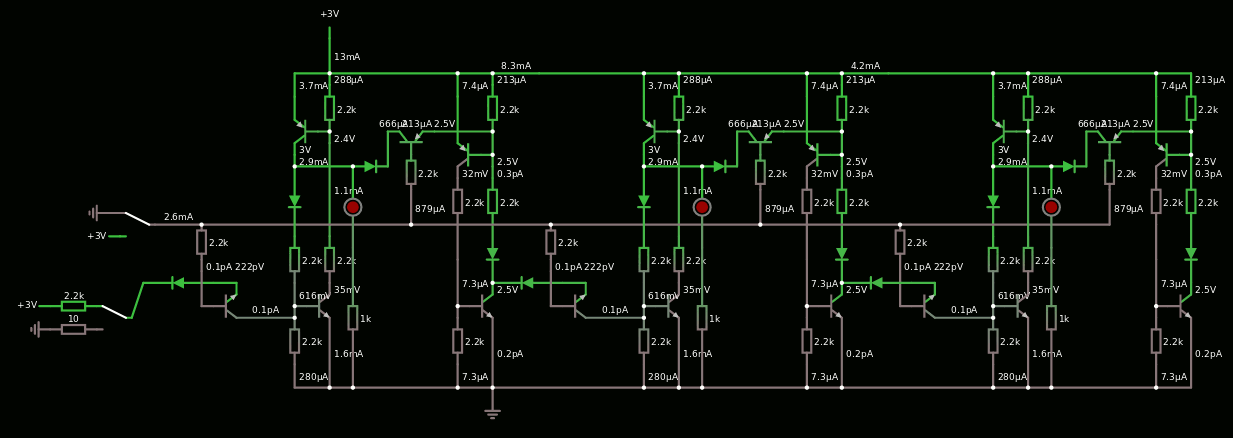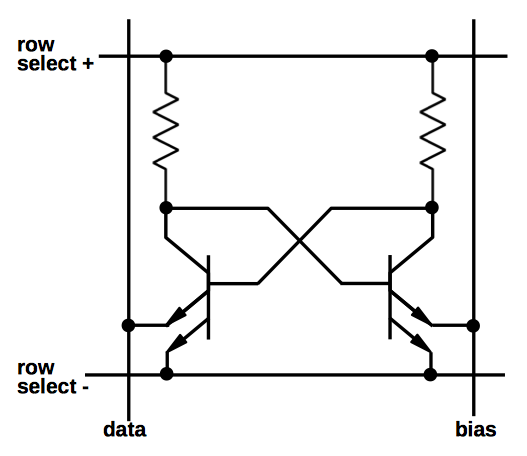OK I wonder how I'll manage to find complementary transistors... But you'all can agree it's a pretty awesome and minimalistic circuit !!!

The first great thing is there is a single clock line, though it must be driven by a push-pull circuit, with probably a complementary PNP-NPN pair.
The other great thing is that each slice uses 1×PNP and 1×NPN, plus either 1 PNP or NPN. So each bit uses 6 transistors, 4 diodes and 10 resistors. I can't see how to use fewer...
The main trick is to use "SCR-style" transparent latches, separated by either PNP or NPN "gates". This particular circuit uses the transistor is a very weird way, where the current flows in either the collector or the emitter, depending on the various voltages. So a single transistor serves in 3 cases : isolate, set or reset ! A couple of diodes is required however to prevent the right/destination from overwriting the left/source.
It would be possible (and possibly cheaper) to use only NPN pass gates with a system of complementary clock signals but the driving circuit is a whole different can of worms. The exercise is left to the implementer.
The source is getting crazy long... I wonder if all web browser will accept it. It's too long for the YT description though. I might upload the next circuits as files...
-----------------
Anyway I didn't find any weird or chaotic behaviour, as in the E&C circuit as before. The circuit would work at other supply voltages, with a little adaptation of the resistor values. You can notice the use of a single value : 2.2K :-)
This circuit is suitable for example for the UART project. The feedback with an inverted value adds another transistor so a divide-by-two is slightly more complicated and larger.
Anyway : the metastability issue is solved, the parts count is minimised and I can progress !
It's now a matter of how I can find complementary pairs in Ge... I have only 2 stocks of silicon complementary transistors : the Russian epitaxials, and the standard cheap BC549/BC550.
For single-type latches, I might have to study the system described by Ken Shirriff at http://www.righto.com/2017/07/inside-intels-first-product-3101-ram.html

Enjoy !
 Yann Guidon / YGDES
Yann Guidon / YGDES
Discussions
Become a Hackaday.io Member
Create an account to leave a comment. Already have an account? Log In.